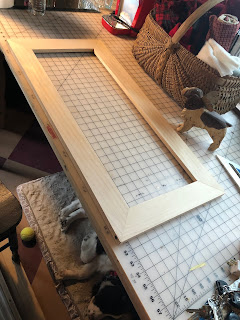Hi friends! I stated in my last project that I'm making a few things for my tiny powder room. I designed a toilet paper holder that is similar to the frame on my mirror. Follow along with me and I'll show you how I made it.
Supplies:
Proxxon Micro Band Saw
Proxxon Drill Press
Proxxon Delta Sander
1/2" Birch Plywood
Wood Dowel Rod
Brad Nailer
Wood Glue
Plaid Paint (black)
Plaid Inspirations Wax (clear)
1. First I figured out a pattern, keeping in mind the size of the roll of toilet paper. Transferred my pattern to my wood.
2. Cut out all the pieces with the Proxxon Micro Band Saw. Just want to mention that because the band saw throat is small, the pattern may have to be drawn on both sides of the wood. When in a tight spot while cutting, turning it over and cutting from the other side usually works.
3. Line up all the pieces to see how they fit then sand with the Proxxon Delta Sander.
4. Using the Proxxon Drill Press, drill holes for the roller on each side piece.
5. Using the band saw I cut a length of dowel rod for the roller. I notched each end to make it easy to grab then sanded.
6. I then glued and nailed the sides to the back.
7. I painted my holder with Plaid paint in black and let dry. I lightly sanded the edges then waxed with clear wax by Plaid Waverly Inspirations.
Its all finished and ready for me to hang up using two black wood screws. Thanks for following along with me.... Colleen :)




























































